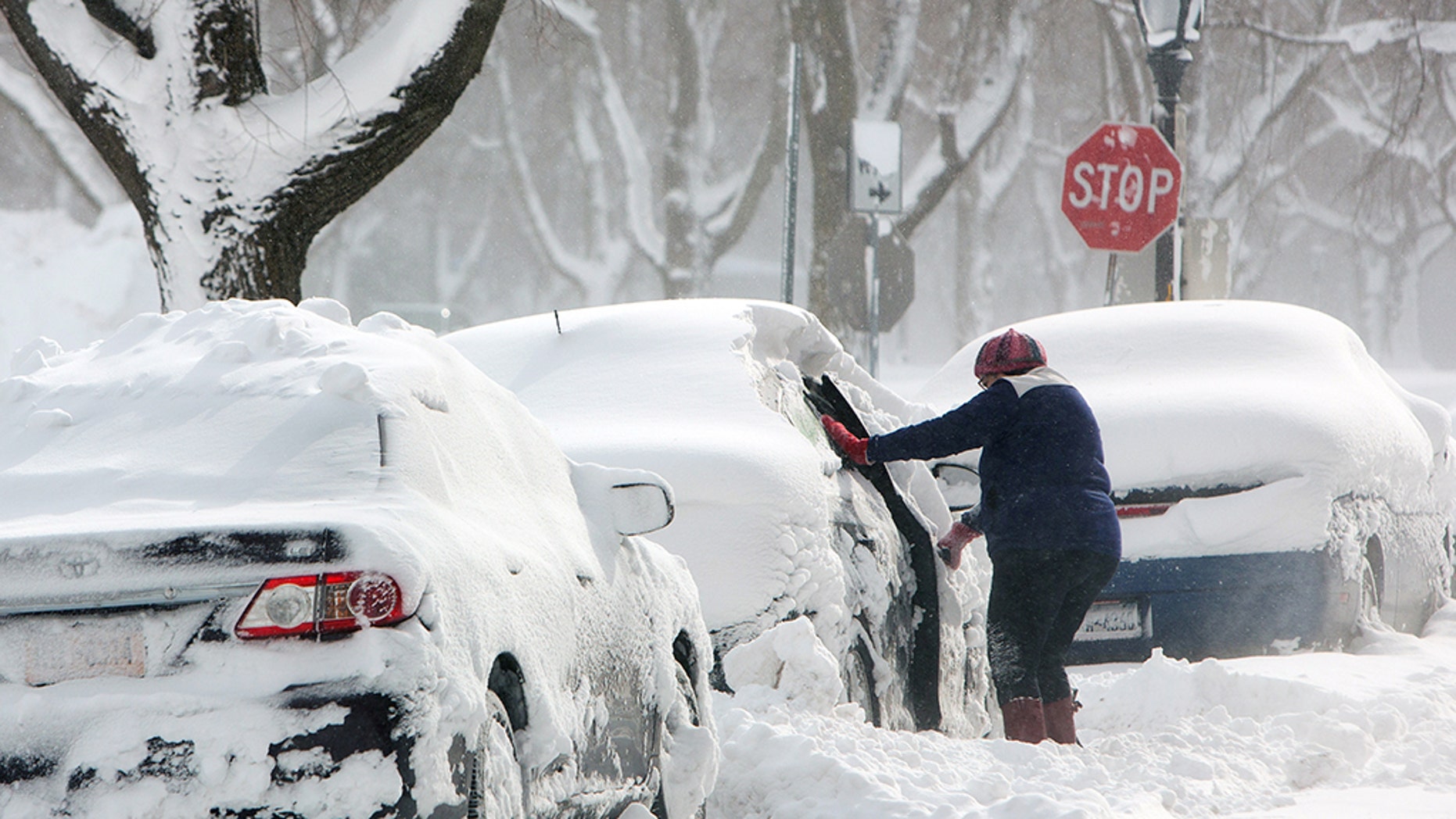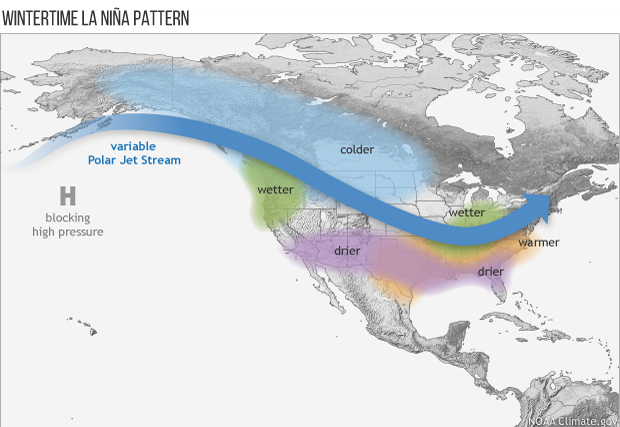Farmer's Almanac Winter Forecast
What will this winter be like in the U.S this year? Each year the Farmer's Almanac projects the winters weather. So what is the forecast?
Well there are actually two Farmer's Almanacs. One is called the Farmers' Almanac and the other one is called the Old Farmer's Almanac. And they are not the same. Farmers' Almanac began publication in 1818. The Farmers’ Almanac says it bases its long-range forecast "on a mathematical and astronomical formula developed in 1818." Wikipedia says the Farmers' Almanac prediction accuracy is about 50%, no greater than random chance. The Old Farmer's Almanac which is the oldest almanac claims an accuracy of 80%. The Old Farmer's Almanac derives its weather forecasts from a secret formula that was devised by the founder of this Almanac, Robert B. Thomas, in 1792. Thomas believed that weather on Earth was influenced by sunspots, which are magnetic storms on the surface of the Sun.
So now onto the winter forecast:
----------------------------------------------
The Farmers' Almanac is predicting
Winter is coming, apparently with a vengeance.
The Farmers’ Almanac recently released its extended forecast for the 2020-2021 season, which shows this upcoming winter could be brutally cold and snowy for much of the country.
“Based on our time-tested weather formula, the forecast for the upcoming winter looks a lot different from last year, quite divided with some very intense cold snaps and snowfall,” editor Peter Geiger said in a statement.
According to the forecast, those who live in the northern half of the country should get ready for extended bouts of cold.
Long-range forecasts from the periodical are calling for normal to below-normal temperatures in areas from the Great Lakes and Midwest stretching westward over the Northern and Central Plains and into the Rockies.
Areas around the Great Lakes are also expected to see a "fair share of snow," but above-normal snowfall is also expected farther west from the western Dakotas into northern portions of Colorado and Utah, as well as Wyoming, Montana, Idaho, and central and eastern sections of Washington and Oregon.
While the Northeast saw barely any snow last winter, the Farmers' Almanac is predicting something "very different" for this upcoming season.
The big cities in the Northeast, as well as parts of the Mid-Atlantic, may see a blizzard during the second week of February, with 1 to 2 feet of snow in places from Washington, D.C. to Boston. Another big snowstorm may also target the East Coast during the final week of March, with "significant" late-season snowfall.
The forecast outlook also calls for a "significant snowfall" at the start of February for eastern Ohio and Kentucky, while the Southern Plains are also expected to see plenty of wintry precipitation during the same month.
While northern and eastern parts of the country deal with the cold and snow, the Desert Southwest is expected to have a dry and mild winter, which could worsen drought conditions.
Coastal areas along the West Coast could see a rainy and wet winter ahead, but areas in between have been dubbed by the periodical as the "crazy in-between," with periods of tranquil and stormy weather.
Some of the regions that could see the stormiest weather stretch from the Tennessee and lower Ohio River valleys up through New England, where storms could line up and bring wintry mix throughout the season.
---------------------------------------
The Old Farmer's Almanac is predicting
If you're looking for a milder winter ahead, Old Farmer's Almanac is calling for "light winter" for most of the U.S., with warmer-than-normal temperatures for a large part of the country.
"Uncommonly chilly temperatures will be limited mostly to the western states and northeastern New England," the publication notes.
Here is a link to their regional forecast: The 2021 Old Farmer's Almanac Winter Weather Forecast is Here
----------------------------------------
Source: Winter looks 'cold and snowy' with some 'crazy in-between,' Farmers' Almanac claims
---------------------------------------
So what does jimmy m. think. Well generally I would go with the Old Farmer's Almanac because of its proven track record. I sense that winter may come sooner than normal. We are not even into September and many leaves are falling to the ground. So Fall is on its way. We have a large wasps nest near the house.
It is only a few inches off the ground. One of the local farmers says that is a strong sign that the winter will not produce much snow. Otherwise the nest would have been constructed much higher.
I generally consult the wooly worms (also called woolybear caterpillars).
They are either brown or black or a mixture. If all black that would be a severe winter. If all brown that would be a mild winter. If banded then look at the direction that the worm is moving, the front is the beginning of winter and the back is the end of winter.
My problem is that this year I have yet to see the first wooly worms. They are almost nonexistent.
_________________
Author of Practical Preparations for a Coronavirus Pandemic.
A very unique plan. As Dr. Paul Thompson wrote, "This is the very best paper on the virus I have ever seen."
I saw my first woolly worm today. So here is the woolly worm forecast for my particular neck of the woods (the Midwest in Indiana].
The front of the worm was black, the middle brown, and the back end was black. The black at the front end was thick but the black at the back end was very thin. The front of the worm was observed by the direction the worm was crawling.
It is interpreted that the start of winter will be very cold and this will last for a month or two. The middle of winter will be mild. The end of winter will also be cold but it will not last very long.
So in general, the woolly worm forecast agrees with the "Old Farmers Almanac" forecast, which also agrees with the hornets nests forecast. In general, the winter here will be mild.
_________________
Author of Practical Preparations for a Coronavirus Pandemic.
A very unique plan. As Dr. Paul Thompson wrote, "This is the very best paper on the virus I have ever seen."
One of the driving forces that affect winter weather is the El Niño–Southern Oscillation (ENSO) Currently we are in a moderate-to-strong La Niña.
La Niña conditions were present in August, and there’s a 75% chance they’ll hang around through the winter. NOAA has issued a La Niña Advisory. 
Source: September 2020 ENSO update: La Niña is here!
So it sounds like their forecast is predicting wetter than normal weather for this winter for my neck of the woods in the Midwest and that is good news because we are currently in drought conditions. We have had only 1 inch of rainfall since August 1.
_________________
Author of Practical Preparations for a Coronavirus Pandemic.
A very unique plan. As Dr. Paul Thompson wrote, "This is the very best paper on the virus I have ever seen."
Last edited by jimmy m on 10 Oct 2020, 8:33 pm, edited 1 time in total.
I never had much luck with Wooly worms or persimmon seeds forecasts .I saw two worms in one day and one only had black at the ends and the other was solid black.
The most reliable forecast I’ve found is the size of a pack rats nest.If they make a huge nest then look out, old man winter isn’t joking.
_________________
I am the dust that dances in the light. - Rumi
I hadn't heard the wooly worm folklore before. I was curious and found this piece that others may also find interesting (see link for whole article):
https://www.weather.gov/arx/woollybear
I moved to Indiana in 1978. A few months before I moved, the State was hit with one of the greatest blizzards in Indiana history. In some areas up to 3 feet of snow fell and the howling winds pushed the snow into gigantic drifts that were 20 to 25 feet high. Some houses were completely covered with snow. People had to exit their homes through second story windows. Many people were stranded for 72 hours. Throughout the Midwest, doctors and emergency personnel were forced to reach people on skis and snowmobiles. The temperatures dropped but because of the fierce winds, the wind chill dropped to -50 degrees F.
When I began work, many of my colleagues told horror stories about the blizzard of '78. Many were stranded at work and only survived because of the food vending machines.
So I have a natural tendency to keep my eye on the winter weather.
_________________
Author of Practical Preparations for a Coronavirus Pandemic.
A very unique plan. As Dr. Paul Thompson wrote, "This is the very best paper on the virus I have ever seen."
Woolly Bear Folklore:
According to folklore, the amount of black on the woolly bear in autumn varies proportionately with the severity of the coming winter in the locality where the caterpillar is found. The longer the woolly bear's black bands, the longer, colder, snowier, and more severe the winter will be. Similarly, the wider the middle brown band is associated with a milder upcoming winter. The position of the longest dark bands supposedly indicates which part of winter will be coldest or hardest. If the head end of the caterpillar is dark, the beginning of winter will be severe. If the tail end is dark, the end of winter will be cold. In addition, the woolly bear caterpillar has 13 segments to its body, which traditional forecasters say correspond to the 13 weeks of winter.
As with most folklore, there are 2 other versions to this story. The first one says that the woolly bear caterpillar's coat will indicate the upcoming winter's severity. So, if its coat is very woolly, it will be a cold winter. The final version deals with the woolly bear caterpillar's direction of travel of the worms. It is said that woolly bear's crawling in a southerly direction are trying to escape the cold winter conditions of the north. On the other hand, woolly bear's crawling on a northward path would indicate a mild winter.
As far as the story about the woolly caterpillar's coat, this is how Mother Nature helps it survive winter. The fur is called setae and it isn't there to protect them from the cold weather. Instead it actually helps them to freeze more controllably. Here is something truly remarkable. Once settled in, the caterpillars hibernate, creating a natural organic antifreeze called glycerol. They freeze bit by bit, until everything but the interior of their cells are frozen. These interior cells are protected by the hemolymph. Woollybears can - and do - survive to temperatures as low as -90 degrees F. This ability to adapt to cold shows up particularly in the Arctic, where the woolly worms live in a strange state of slow motion. Most caterpillars live for two to four weeks before becoming moths. The Arctic woolly worms, however, spend at least 14 years in the process! The woolly bear caterpillar has even been known to survive an entire winter completely frozen in an ice cube.
Source: Woolly Bear Caterpillar - Winter Predictor Or Not?
_________________
Author of Practical Preparations for a Coronavirus Pandemic.
A very unique plan. As Dr. Paul Thompson wrote, "This is the very best paper on the virus I have ever seen."
^
^
It's a wise precaution. During winters here we are constantly checking the weather reports, road conditions, and snow plow cameras. It will be nice to not worry about that this winter (since I'm working from home and not travelling).
I was in a bad blizzard like the one you described once in Colorado. We were lucky to be staying at a major hotel with a restaurant inside. Guests and employees were stuck so we all just hunkered down there.
The winter before last Fey and I were driving back from a day trip (3 hours away) and got caught in a sudden winter storm as it was getting dark. There were no places to stop (middle of nowhere land out here). It was a very stressful drive.
After nearly a decade away, La Niña weather system is back…
This is expected to result in sea surface temperatures between two and three degrees Celsius cooler than average, said Dr. Maxx Dilley, Deputy Director in charge of Climate Services Department at WMO.
The likely results of La Niña vary around the globe, but indications are that the Horn of Africa will see below average rainfall, as will Central Asia.
Elsewhere, WMO’s weather models forecast above-average rainfall for Southeast Asia, some Pacific Islands and the northern region of South America.
The UN agency also warned that East Africa is forecast to see drier than usual conditions, which together with the existing impacts of the desert locust invasion, may add to regional food insecurity.
WMO says that there is a 90 per cent chance of tropical Pacific sea surface temperatures remaining at La Niña levels for the remainder of the year, and a 55 per cent chance that this will continue through March next year.
This is important because La Niña contributes to temperatures, rainfall and storm patterns in many parts of the world.
_________________
Author of Practical Preparations for a Coronavirus Pandemic.
A very unique plan. As Dr. Paul Thompson wrote, "This is the very best paper on the virus I have ever seen."
Well it looks like the Old Farmers Almanac is right on target this year. It has been a very mild winter thus far. Currently seeing highs in the 30s and lows in the 20s [deg. F]. But next week they are projecting highs in the 40s. Who knows we might even see an early Spring.
That will bode well in keeping down the death toll from COVID, at least in my neck of the woods.
_________________
Author of Practical Preparations for a Coronavirus Pandemic.
A very unique plan. As Dr. Paul Thompson wrote, "This is the very best paper on the virus I have ever seen."
| Similar Topics | |
|---|---|
| Winter generators |
18 Jan 2025, 6:10 am |
| It's Winter and viruses are running around |
10 Feb 2025, 4:12 pm |
| Dry and itchy skin in the winter |
09 Feb 2025, 12:19 pm |







